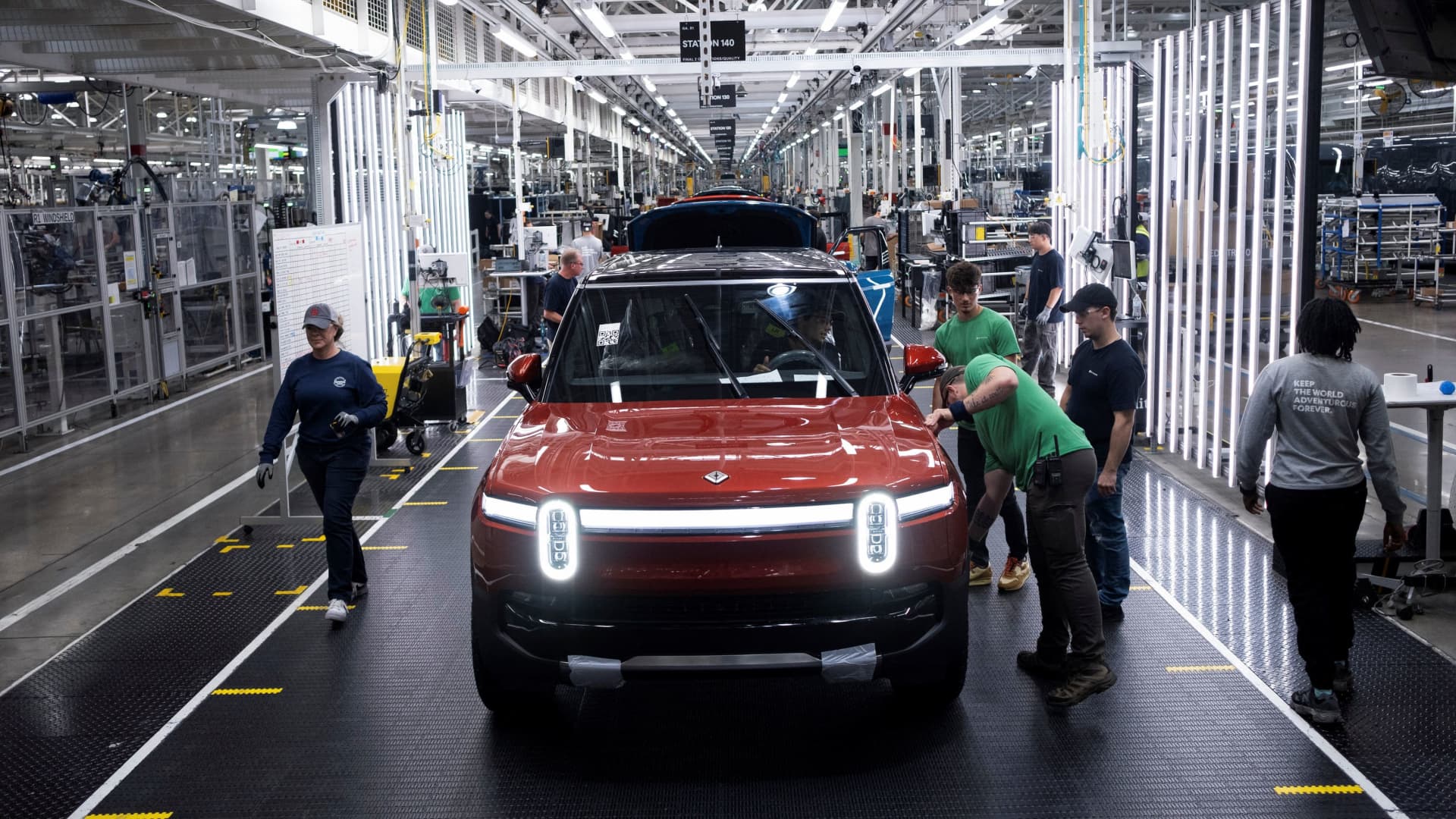Rivian’s Strategic Pivot: Navigating Uncertainty in the EV Market
In the dynamic world of electric vehicles (EVs), Rivian stands at a crossroads. The company’s recent adjustments to its 2025 delivery targets and increased spending, coupled with escalating tariff pressures, signal a strategic shift. This analysis explores the implications of these changes, market reactions, and Rivian’s strategic initiatives to overcome these hurdles.
Shifting Delivery Targets and Financial Strain
Rivian’s revised 2025 delivery targets now range from 40,000 to 46,000 units, a significant downgrade from earlier projections. Concurrently, the company anticipates spending between $1.8 billion and $1.9 billion, reflecting the financial pressures it faces. Several factors contribute to this revised outlook, including supply chain disruptions, escalating raw material costs, and the impending threat of tariffs on imported vehicles and auto parts.
The Tariff Conundrum
Tariffs, especially those enforced by the U.S. administration, present a substantial risk to Rivian’s operational and financial health. The upcoming increase in tariffs on imported batteries, set to take effect in May, is poised to elevate production costs significantly. This cost escalation could dampen consumer demand for Rivian’s EVs, further complicating the company’s delivery forecasts.
Analysts have swiftly responded to these developments. Bernstein, for example, has maintained an Underperform rating for Rivian, slashing its price target to $6.10. This represents a potential 47% drop from Rivian’s last closing price of $11.47. Bernstein’s revised forecast highlights the financial hurdles Rivian must overcome, particularly in the face of tariff pressures.
Market Volatility and Analyst Divergence
The market’s response to Rivian’s revised guidance has been a mix of optimism and caution. Initially, Rivian’s shares surged as much as 7% in extended trading, only to later pare gains and trade up about 1%. This volatility mirrors the uncertainty surrounding Rivian’s future trajectory.
Analysts have offered varied perspectives. Baird, for instance, has adjusted its price target to $14.54, aligning with the average forecast. In contrast, Bernstein has taken a more pessimistic stance, setting Rivian’s target at $6.10. This divergence in analyst opinions underscores the complexity of Rivian’s situation and the range of potential outcomes.
Strategic Initiatives and Future Prospects
Amidst these challenges, Rivian is proactive in its approach. The company plans to invest $120 million to bring key suppliers closer to its Illinois plant, aiming to mitigate supply chain disruptions and ensure a steady supply of components. This strategic move is crucial for maintaining production efficiency and meeting delivery targets.
Additionally, Rivian is focusing on cost-cutting measures to bolster its financial health. The company expects to achieve a modest gross profit in 2025, a positive sign amidst the turmoil. This profit is anticipated to come from reducing raw material and supply chain costs, demonstrating Rivian’s commitment to operational efficiency.
The Path Forward
As Rivian navigates these turbulent times, several factors will shape its future. The resolution of the tariff dispute, the company’s ability to adapt to supply chain challenges, and its success in executing cost-cutting measures will all be pivotal. Furthermore, Rivian’s strategic investments in manufacturing capabilities and supplier relationships will be vital for long-term sustainability.
Conclusion: A Crucial Inflection Point
Rivian’s decision to lower its 2025 delivery targets and increase expected spending amidst tariff pressures marks a critical juncture for the company. While the challenges are formidable, Rivian’s proactive strategies and investments offer a beacon of hope. The coming months will be decisive in determining whether Rivian can overcome these obstacles and emerge stronger. As the EV market continues to evolve, Rivian’s journey will exemplify the resilience and adaptability required to thrive in an ever-changing landscape.








